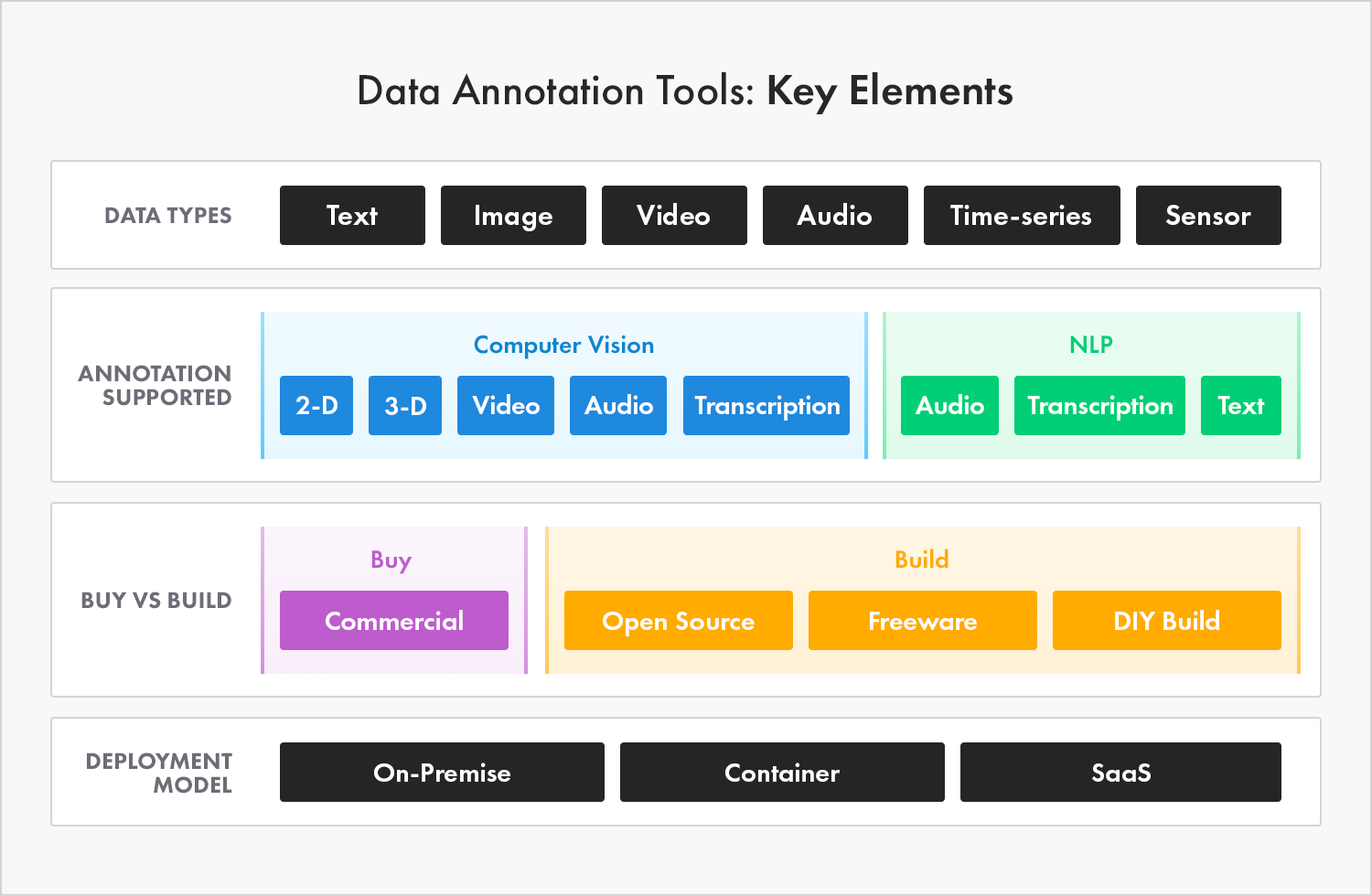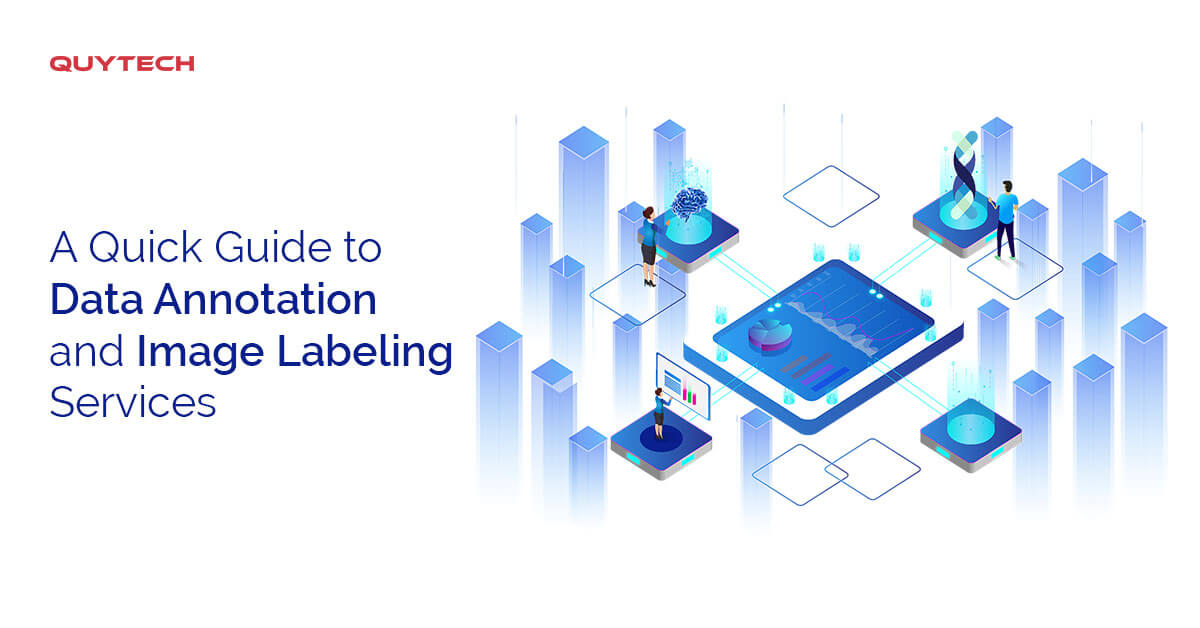There is no tools doubt that the advent of machine learning and artificial intelligence has revolutionized various industries across the globe. Both of these technologies are making applications and machines smarter than we ever imagined. But, have you ever wondered how artificial intelligence and machine learning work or how they allow machines to act, think and behave like humans.

To understand this, you have to delve a little deeper into technical issues. In fact, trained datasets hold the magic to create automated machines and applications. These datasets also need to be created and trained through a process called Data annotation.
Data annotation is a technique for labeling data, which exists in different formats such as images, text, and videos. Annotated data enables computer vision to recognize objects to further train the machine. In short, the process helps machines understand and remember input patterns.
In order to create the datasets required for machine learning, different types of data annotation methods can be used. The main purpose of all these types of annotations is to help machines recognize text, images and videos (objects) through computer vision.
Types of data annotations
• Bounding boxes
• Lines and splines
• Semantic segmentation
• 3D cuboids
• Polygon segmentation
• Landmarks and keypoints
• Image and video annotation
• Entity annotation
• Content and text classification
Let’s read them in detail:
bounding box
The most common type of data labeling is the bounding box. These are rectangular boxes used to identify the location of objects. It uses x and y coordinates for the upper left and lower right corners of the rectangle. The main purpose of this type of data annotation is to detect objects and locations.
Lines and Splines
This type of data annotation is created from lines and splines and is used to detect and identify lanes, which is necessary to run self-driving cars.
semantic segmentation
This type of annotation comes into play when the context of the environment is a key factor. It is a pixel-by-pixel annotation that assigns each pixel of an image to a class (car, truck, road, park, pedestrian, etc.). Every pixel has meaning. Semantic segmentation is most commonly used to train models for self-driving cars.

3D cuboid
This type of data annotation is almost like a bounding box, but it provides additional information about the depth of the object. Using a 3D cuboid, machine learning algorithms can be trained to provide a 3D representation of an image.
Images can further help distinguish important features (such as volume and position) in the 3D environment. For example, 3D cuboids help self-driving cars use depth information to figure out how far objects are from the vehicle.
polygon segmentation
Polygon segmentation is used to identify complex polygons to most accurately determine the shape and location of objects. This is also one of the common types of data annotation.
Landmarks and key points
These two annotations are used to create points on the image to identify objects and their shapes. Landmark and keypoint annotations play a role in facial recognition, identifying body parts, poses, and facial expressions.
Entity annotation
Entity tagging is used to tag unstructured sentences with relevant information that machines can understand. It can be further divided into named entity recognition and intent extraction.
Benefits of Data Labeling
Data labeling offers numerous advantages to machine learning algorithms tasked with training predictive data. Here are some advantages of this process:
• Enhanced user experience
Applications powered by machine learning-based trained models help provide a better experience for end users. AI-based chatbots and virtual assistants are a good example. This technology enables these chatbots to provide the most relevant information in response to user queries.
Image annotation improves the accuracy of the output by training the algorithm with a large dataset. Using these datasets, the algorithm will learn various factors that will further help the model in finding the right information in the database.
Format of image annotations
The most common callout formats include:
• Cocoa
• YOLO
• Pascal VOC
Application of Data Labeling in Machine Learning
Now, you must understand the different types of data labels. Let’s take a look at its application in machine learning:
• Sorting – it includes text and time series and a label.
• Classification – Classify data into classes, a label, multiple labels, binary classes, etc.
• Segmentation – Used for where search paragraphs break, search transitions between different topics, and various other purposes.
• Mapping – Can perform language-to-language translations, convert full texts to summaries, and other tasks.
Tools for Data Labeling
Check out some of the common tools for annotating images below:
• Rectlabel
• LabelMe
• LabelImg
• MakeSense.AI
• VGG Image Annotator
final words
In this article, we have mentioned what is data annotation or labeling, its types and benefits. Besides that, we also list the top tool for annotating images. The process of labeling text, images, and other objects helps ML-based algorithms improve the accuracy of output and provide the ultimate user experience.
A reliable and experienced machine learning company has expertise in how to use these data annotations to serve the purpose for which the machine learning algorithm was designed. You can contact such companies or hire ML developers to develop ML-based applications for your startup or enterprise.

 Afrikaans
Afrikaans Albanian
Albanian Amharic
Amharic Arabic
Arabic Armenian
Armenian Azerbaijani
Azerbaijani Basque
Basque Belarusian
Belarusian Bengali
Bengali Bosnian
Bosnian Bulgarian
Bulgarian Catalan
Catalan Cebuano
Cebuano Chichewa
Chichewa Chinese (Simplified)
Chinese (Simplified) Chinese (Traditional)
Chinese (Traditional) Corsican
Corsican Croatian
Croatian Czech
Czech Danish
Danish Dutch
Dutch English
English Esperanto
Esperanto Estonian
Estonian Filipino
Filipino Finnish
Finnish French
French Frisian
Frisian Galician
Galician Georgian
Georgian German
German Greek
Greek Gujarati
Gujarati Haitian Creole
Haitian Creole Hausa
Hausa Hawaiian
Hawaiian Hebrew
Hebrew Hindi
Hindi Hmong
Hmong Hungarian
Hungarian Icelandic
Icelandic Igbo
Igbo Indonesian
Indonesian Irish
Irish Italian
Italian Japanese
Japanese Javanese
Javanese Kannada
Kannada Kazakh
Kazakh Khmer
Khmer Korean
Korean Kurdish (Kurmanji)
Kurdish (Kurmanji) Kyrgyz
Kyrgyz Lao
Lao Latin
Latin Latvian
Latvian Lithuanian
Lithuanian Luxembourgish
Luxembourgish Macedonian
Macedonian Malagasy
Malagasy Malay
Malay Malayalam
Malayalam Maltese
Maltese Maori
Maori Marathi
Marathi Mongolian
Mongolian Myanmar (Burmese)
Myanmar (Burmese) Nepali
Nepali Norwegian
Norwegian Pashto
Pashto Persian
Persian Portuguese
Portuguese Punjabi
Punjabi Romanian
Romanian Russian
Russian Polish
Polish Samoan
Samoan Scottish Gaelic
Scottish Gaelic Serbian
Serbian Sesotho
Sesotho Shona
Shona Sindhi
Sindhi Sinhala
Sinhala Slovak
Slovak Slovenian
Slovenian Somali
Somali Spanish
Spanish Sundanese
Sundanese Swahili
Swahili Swedish
Swedish Tamil
Tamil Tajik
Tajik Telugu
Telugu Turkish
Turkish Ukrainian
Ukrainian Urdu
Urdu Uzbek
Uzbek Thai
Thai Vietnamese
Vietnamese Welsh
Welsh Xhosa
Xhosa Yiddish
Yiddish Yoruba
Yoruba Zulu
Zulu